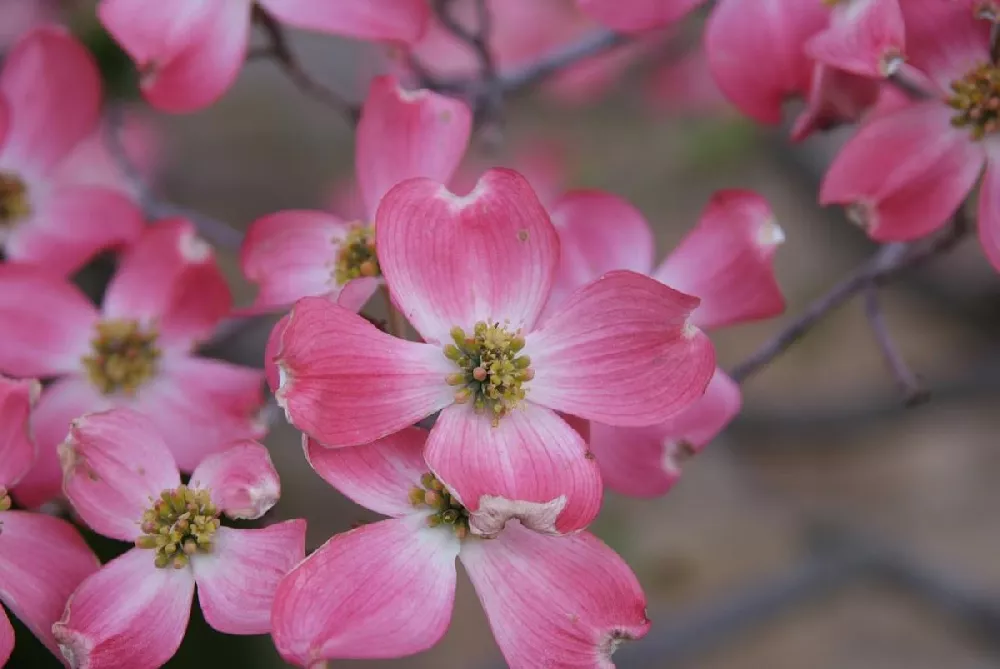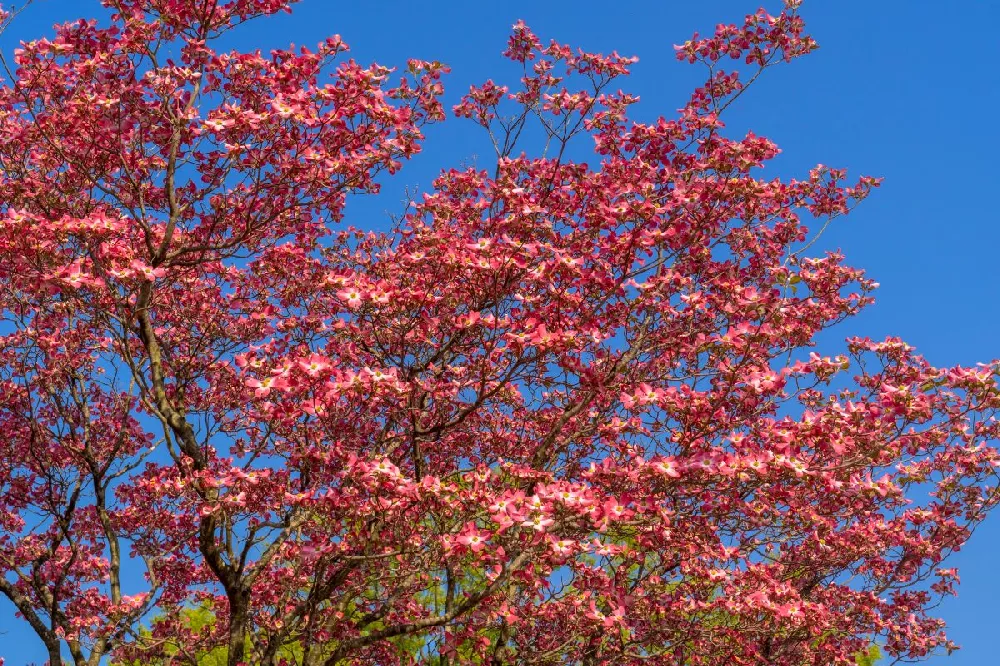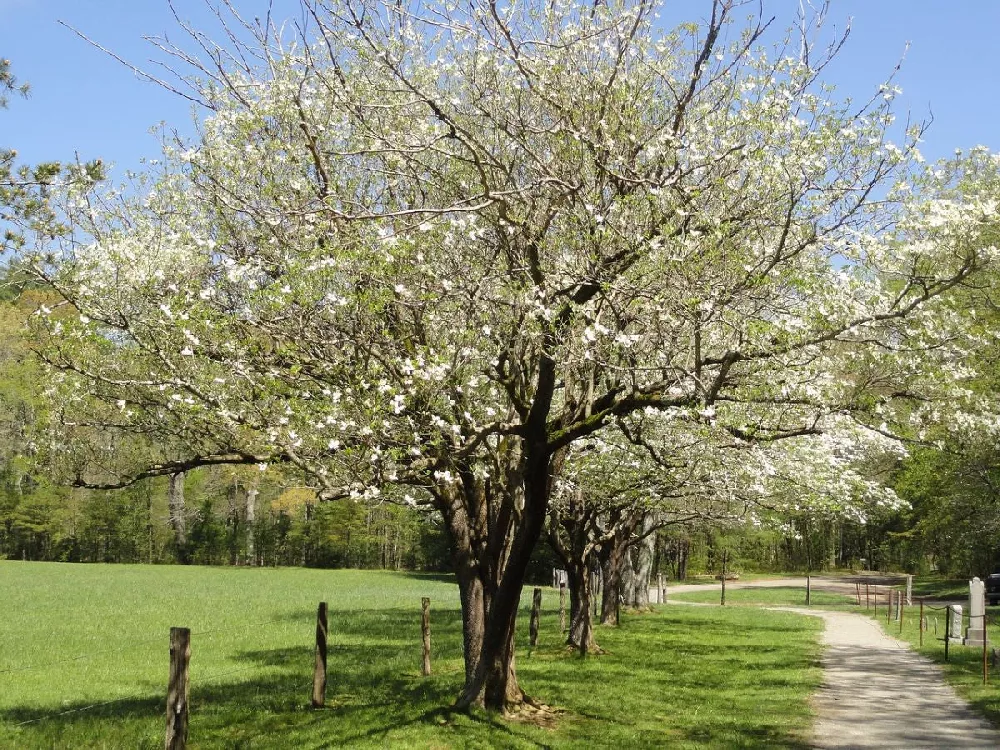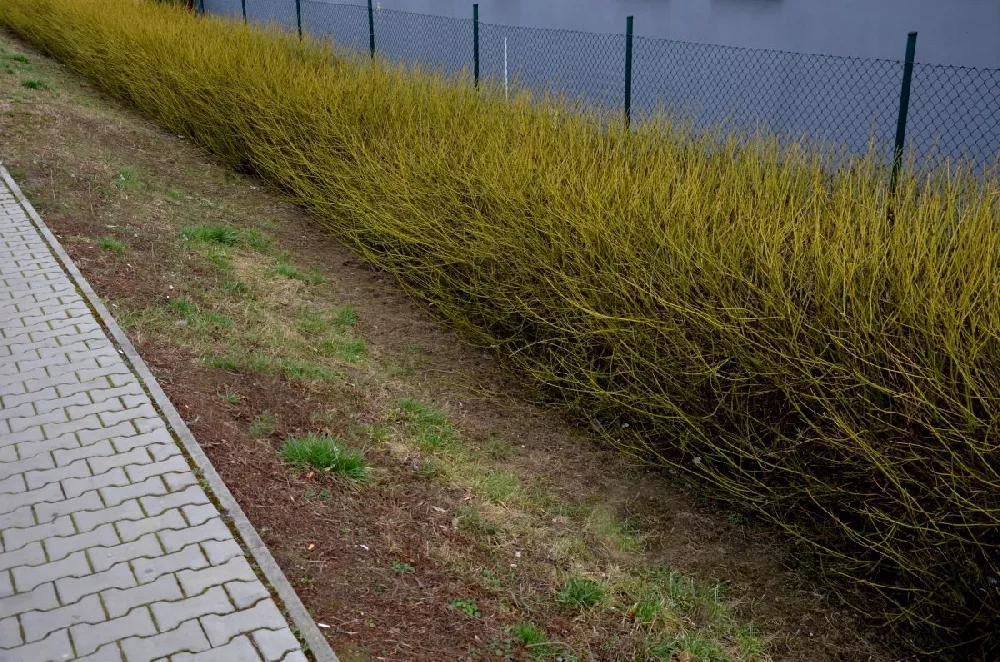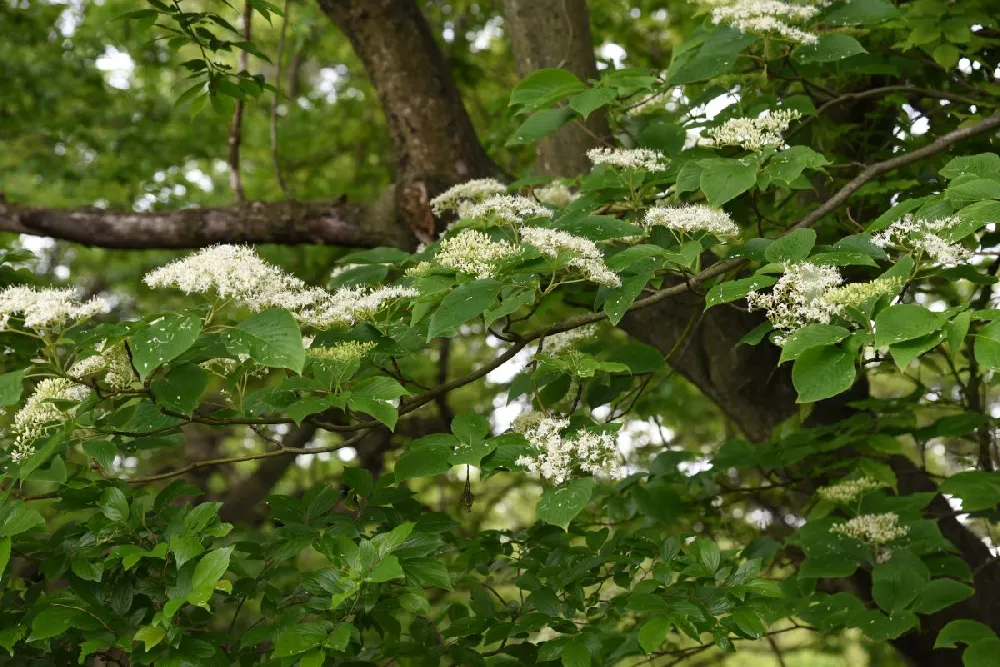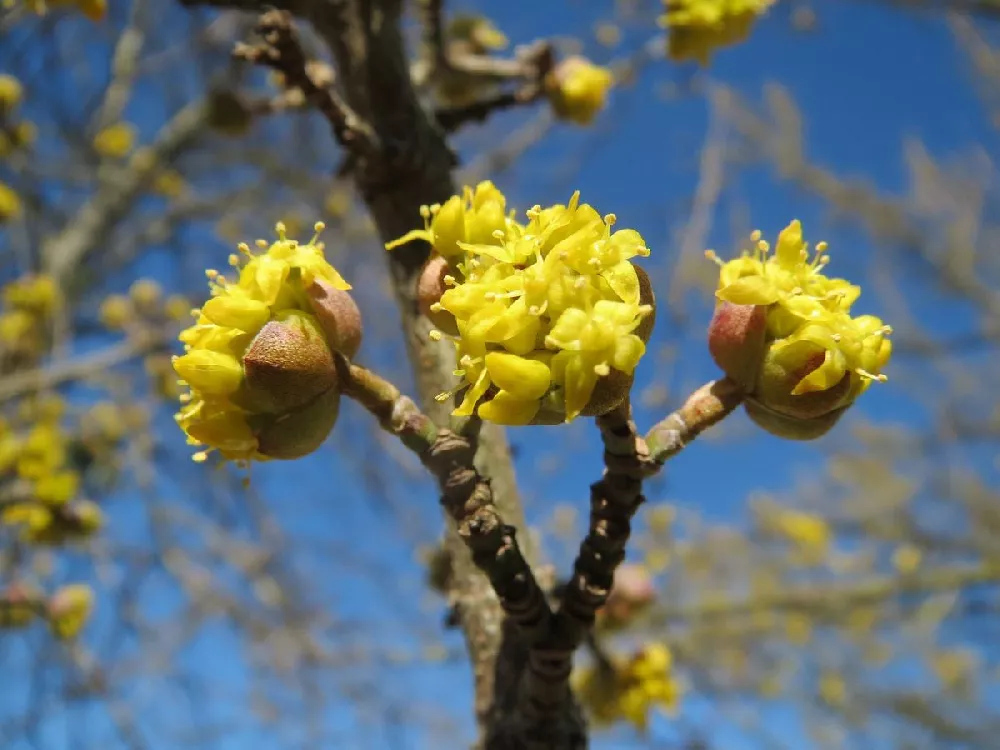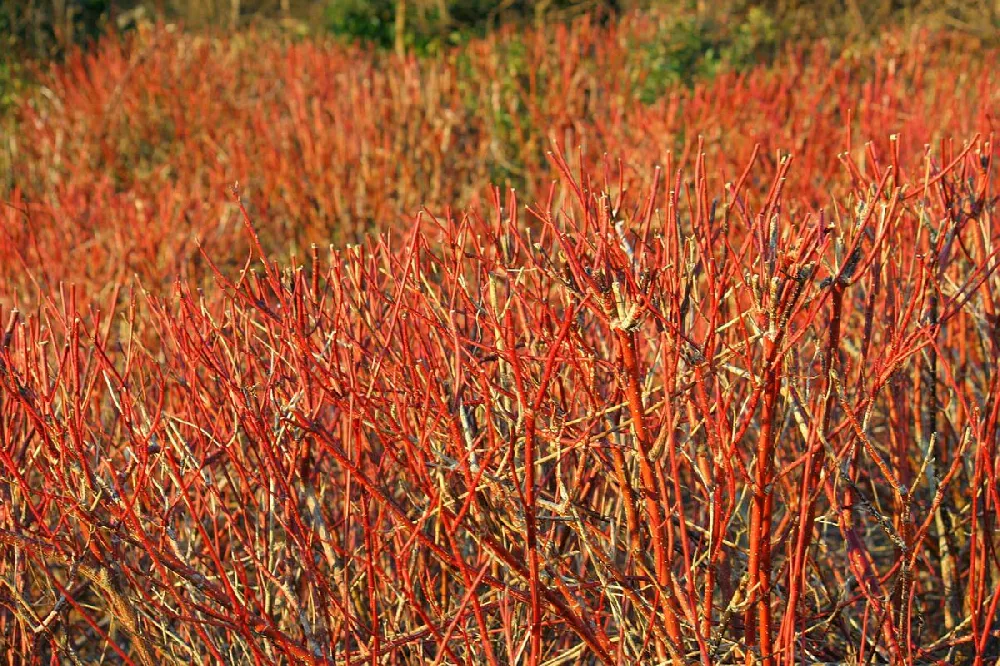- Home >
- Ornamental Trees >
- Red Flowering Dogwood
Red Flowering Dogwood for Sale - Buying & Growing Guide
- Ships in 1-2 days
- 1-Year Warranty Eligible
- Pots or accessories are not included unless specified in the product options.
Shipping Details:
Once your order is shipped, you’ll receive an email with a tracking number and estimated delivery date. Most orders ship immediately, but some items are seasonal and may only ship in spring or fall. These products are noted on the website.
The red flowering dogwood, Cornus florida var. Rubra, has it all. It lights up the spring garden with lovely pink-red flowers that shade to white. In the summer, its broad, bushy canopy thrives in partial shade, under taller trees, or next to buildings. Fall brings leaves of a rusty red hue, while in winter, the mature dogwood's pleasingly-twisted limbs and mottled gray-brown bark provide interest against snowy backgrounds. It's easy to care for, and, unlike many dogwoods, it is mildew-resistant. Its smaller size makes it perfect for urban gardens or petite yards, since it maxes out at a height of only 20 to 25 feet. Need a few more reasons to love it? Here are three:
- The red flowering dogwood is hardy down to -10 degrees Fahrenheit, so it can be grown throughout much of the U.S.
- It is a favorite with songbirds, who love the small red berries.
- It is resistant to deer and generally pest-free.
Plant Care
Sunlight

Dogwoods prefer partial shade but can handle full sun in cooler regions.
Watering
Water your red flowering dogwood once or twice a week — more during very hot or dry weather.
Fertilizing

Feed in the spring with a balanced, slow-release fertilizer designed for landscape trees and shrubs.
Planting and Care
Planting instructions
Site your tree where it will get filtered or light shade — a spot with morning sun and afternoon shade is one option. Dogwoods like moist, fertile soil that is slightly acidic and that drains well. Work some well-rotted compost or manure into the soil before you plant your tree. Unpot the sapling, and tease out any encircling roots, which can girdle the tree and slowly kill it. Dig a hole that is as deep as the root ball and twice as wide. Place the tree in it, spreading out the roots. Fill in around the roots with the compost-enriched soil, tamping down as you go to eliminate air pockets. Water thoroughly. Apply a 2- to 3-inch layer of an organic mulch, such as bark chips, around the root zone to conserve moisture and hinder weed growth, keeping it away from the tree’s trunk to avoid rot.
Watering and nutrients
Dogwoods have shallow root systems that may dry out during very hot or dry weather. Water a young red flowering dogwood several times a week to help it establish strong roots. A mature tree will benefit from a single watering per week, giving it about 1 inch of water each time. If the leaves turn light green or droop, you may be overwatering. Dogwoods are light feeders and do not need a lot of fertilizer. A light application of a balanced, slow-release fertilizer in spring, such as a 12-12-12 formula, would be enough.
Pollination
Dogwoods are monoecious, meaning that male and female reproductive organs are on the same tree. The male organs produce pollen which is transferred to female organs within the same flowers. The end result is attractive red berries in the fall, which contain the seeds and are beloved by birds and small animals.
Pruning
Red flowering dogwoods need little pruning. Monitor your tree for dead, diseased, or damaged branches, and prune these out when you see them. Other than that, it’s best to leave the tree alone, so that it can form its natural softly rounded canopy as it grows.
Pests and diseases
Pests that may occur on your dogwood include twig borers, aphids, dogwood borers, and scale insects. A healthy tree should be able to handle mild infestations, so avoid using insecticides except as a last resort, as these also kill beneficial insects. Diseases of the dogwood include anthracnose, powdery mildew, and canker. Many diseases are fungal in nature and may be helped by spraying the tree with a copper fungicide. Keep the area around the tree free of leaf debris, and avoid wetting the leaves when watering.
Achieving maximum results
For the gardener with space limitations, it is possible to grow dogwoods in a planter or pot. Choose a container for your dogwood that is at least twice the size of the root ball, with room for the roots to spread out horizontally as well as vertically. It should have good drainage holes in the bottom. Plant your sapling in good-quality potting soil, and keep in mind that container-grown plants may need more water and fertilizer than plants grown in the ground. Every few years, unpot your tree and trim back the roots while refreshing the soil as well. During the winter, bring your potted dogwood inside when the temperatures are low, but keep it in an unheated garage or basement, since it needs to remain dormant during the winter.
FAQs
Where can I grow a red flowering dogwood tree?
How big does a red flowering dogwood get?
The red flowering dogwood maxes out with both width and height of 20 to 25 feet. For this reason, they should not be planted under low-hanging overhead utility wires and should be properly spaced at least 10 feet away from your home or other buildings. Because they are smaller in stature than many ornamental trees, they are a good choice for urban gardens or more petite landscapes.
How is the red flowering dogwood best used in a landscape?
Dogwoods are the quintessential specimen tree, and some gardeners would say they are at their best when sited in a place of pride in the front yard, where they can be seen by others. When underplanted with shade-loving perennials, such as astilbes and hostas, a single dogwood can turn a front lawn from humdrum into spectacular. They are a perfect tree, as well, to place in front of taller trees at the back of a property, since they thrive in partial shade. Dogwoods also add charm and elegance to Asian-inspired gardens and cottage gardens.
Compare Similar Products
You can't add more Product Name - Product size to the cart.
OK